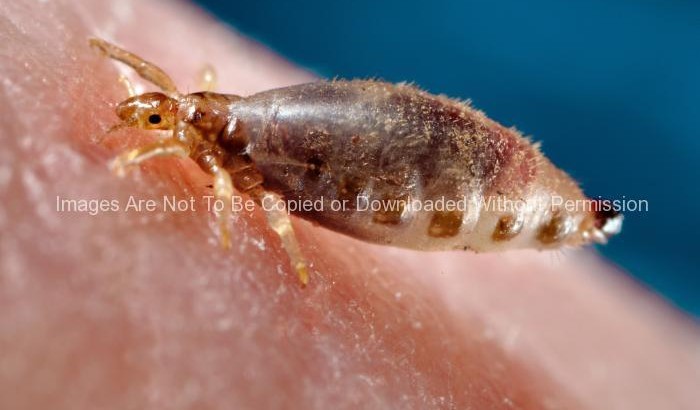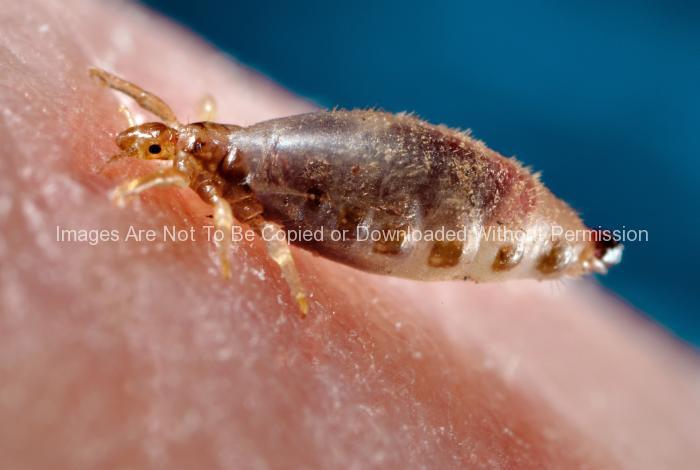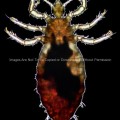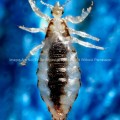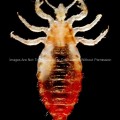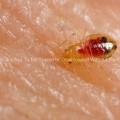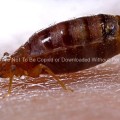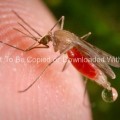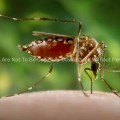This photograph depicts a lateral view of a female body louse, Pediculus humanus var. corporis, as it was obtaining a blood-meal from a human host, who in this case, happened to be the photographer. Note its elongated abdominal region without any processes, and three pairs of legs, which are all equal in length and width, features displayed by Pediculus members.
Body lice are parasitic insects that live on the body, and in the clothing or bedding of infested humans. Infestation is common, found worldwide, and affects people of all races. Body lice infestations spread rapidly under crowded conditions where hygiene is poor, and there is frequent contact among people. Note the sensorial setae, or hairs that cover the louse’s body, which pick up, and transmit information to the insect about changes in its environment such as temperature, and chemical queues. The dark mass inside the abdomen is a previously ingested blood meal.
Are body lice infestations common in the United States?
Body lice are found only in homeless, transient populations who don’t have access to changes of clothes or bath. Infestation is unlikely to persist on anyone who bathes regularly and who regularly has access to freshly laundered clothing and bedding.
